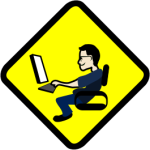I’ve spent the past week on business travel in Southern Florida. As business trips go, this one wasn’t bad. The workload was relatively light and the weather here beat the hell out of weather in Washington, D.C. (for anyone who only wants to see ice in a drink, not on a road). The downside is that I’m not home, but Winnie always seem to take our temporary separations in stride.
The good part is that I had free time to migrate my on-line photo collection to this new website. It was a bit of a lift due to the number of photo images I had in my legacy site, and due to the differences in software.
Warning! Tech Speak Ahead
If technical talk causes you to roll your eyes and view your Smart Phone, stop reading now!
Ok, thanks for sticking around. As I was writing; Migrating photo images was a lift and I essentially ended up editing each file.
The first problem was the sheer number of photo images I’ve uploaded over the nine years I’ve been operating this website – 638. This actually accounts for only a small fraction of my total photo collection. With my legacy website I limited myself on photo uploads as the software I used was pretty clunky and uploading photos took a lot of time and effort. Lucky me, now.
This leads to my second big problem of differences in software. The legacy photo software I used was “Gallery,” an open source package that in 2005 was pretty popular (and still is) as a stand-alone imaging package. The version I used, Version 1.0, had the advantage of integrating pretty nicely into the Content Management System (CMS) package I used named “PHP-Nuke.” PHP-Nuke was also pretty popular at the time. Time, however, marches on and my website didn’t.
I never upgraded my software once I got everything working right on the basis that I shouldn’t be fixing something that wasn’t broken. This approach worked well until last November when my website did break, and I discovered that I could no longer fix nine year old software. PHP-Nuke had moved from my website version 7.6 to version 8.4, and when I upgraded everything not part of the PHP-Nuke core stopped working. This drove me to migrate to a new and supportable software package “WordPress,” which offers a lot of excellent plugins including a photo image package “NextGen.”
Moving Files and Data
Once I learned how to use WordPress and migrated all my posts and feature stories I started working on my photo collection. Gallery v1.0 used flat files for storing image metadata and the NextGen loaded everything into a MySQL database (as it should). I quickly learned that no software developers had ever taken the time to write a freely-available script to migrate Gallery v1.0 to NextGen, but I found a script to migrate Gallery v1.0 to the latest Gallery version v3.0 which did use a MySQL database. The data structure between Gallery and NextGen databases is different, but converting between different databases is pretty straightforward.
The script mostly worked, migrating metadata for about half of my images. There was no apparent rhyme or reason for migrating some images and not others, but I decided that half was better than none. With at least some metadata in a database I expected to be able to convert over to the new NextGen data format fairly easy. This was still not to be.
I uploaded my images into the NextGen software and loaded the metadata I did have from Gallery. Then I discovered that the NextGen package could read all file metadata including file creation dates and camera data from electronic data, unlike Gallery v1.0 where I had to manually load metadata with each image I uploaded. With my migration metadata just didn’t exist for many images and if there was no time/date stamp recognizable to the up-loader, NextGen assigned the timestamp of the upload event. I also discovered that titles and descriptions for most of images that did migrate over really sucked.
The end result was that I spent my free evenings this past week manually editing 638 photo images for titles, description, and tags.
Photos Open For Viewing
As of now, I do have photographs once again available for viewing under the “Our Photography Albums” section of the sidebar menu with proper titles, descriptions, and tags. Timestamp data still has to be edited as required but I’m putting this off because it requires me to dig back into my files of 35mm negatives for dates. This might be a job for my next business trip…
I do hope my many viewers enjoy my photo collection. Since it will be so much easier to upload and post images with this new software I expect to upload a lot more images in the coming months! Next job will be to migrate genealogy files.
Related Stories
Hello World!: My first post working with the WordPress Content management System (CMS)
Expanding Our On-Line Footprint
Exploring China
Updated: May 2, 2020 converted to the Gutenberg Blocks format, and made some minor editing changes for Yoast Search Engine Optimization (SEO).
